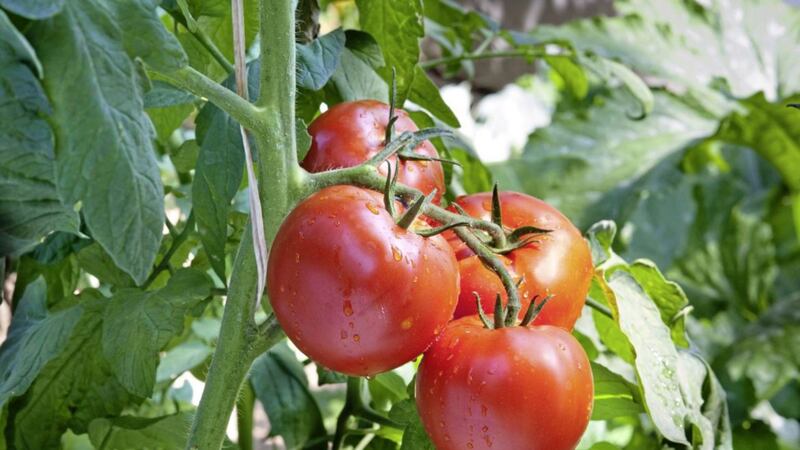THE best gardeners are always thinking ahead, often working in years rather than weeks and months. Good planning over impulse, and deferred gratification ahead of instant pleasure are good rules of thumb for a successful garden, whatever your taste.
With the past week’s Arctic weather it feels wrong to think ahead to summer yet at the same time it also seems appropriate.
For me, few things embody summer more than the smell of tomato plants. The scent is barely discernible until you touch the leaves, then wafts of a sweet, mildly intoxicating, earthy aroma fill your nostrils.
Of course, it’s for the fruit rather than that the smell of the plants that we grow tomatoes. For anybody with a greenhouse, they’re the summer staple. To the uninitiated a tomato is a tomato; however, home-grown varieties are far more flavoursome than their shop-bought counterparts. I even know gardeners who won’t eat tomatoes yet insist of raising a crop every year for others to enjoy.
The annual tomato adventure gets under way over the coming weeks with the sowing of seeds. The sooner you get started, the longer your growing season, which if managed properly can stretch from July well into the autumn.
The first step is choosing which variety to grow.
Tomatoes can be grown outside but those varieties best suited to being raised under cover – whether it be in a conservatory, greenhouse or polytunnel – generally provide greater yield.
Traditionalists will gravitate towards popular, tried and tested varieties such as 'Gardeners' Delight', 'Ailsa Craig' and 'Alicante'. These are cordon – or ‘indeterminate’ – varieties and are best suited for a greenhouse or the like.
Outdoors, it’s bush – or ‘determinate’ – varieties which generally perform best. Unlike their indoor counterparts, which become unruly and are unable to support their own weight, the main stem of bush plants ends in a flower truss with subsequent growth coming from the side-shoots, producing a compact plant. This bushy habit means the plants don’t need the elaborate support necessary with cordons.
Recommended bush varieties include the extremely vigorous ‘Losetto’, the early-fruiting, sweet-tasting 'Lizzano’ and ‘Tumbler’, which works well in a hanging basket.
Tomato seeds can be sown around now in pots in preparation for planting out – or ‘in’ as the case may be – around May. Start them off indoors, using a propagator, or place the pots in a plastic bag and keep on a bright windowsill.
In my greenhouse I have a specific bed for tomatoes where the growing medium is replaced every year to avoid a build-up of disease. It’s refilled with a bespoke mix of seaweed, worm cast and homemade compost. Commercially available grow bags are popular but not always reliable in terms of the compost’s fertility, which is arguably a ploy to ensure you also buy liquid feed. I’d like to think only novice tomato growers use this ‘convenient’ method while the serious ones know the provenance of their growing medium.
When your young plants are ready for transplanting, bury them six inches or so deeper than they were in the pots they were raised in, as this makes for more roots and more robust growth.
Once transplanted, cordon varieties will require support, either from canes or tied with garden string fixed over head. Water them generously and regularly. Feed-wise, I give mine a regular feed of a diluted nettle tea that ferments in a bucket tucked away in a far corner where its rotting flesh stench goes unnoticed. Commercial feeds that don’t smell as bad are also available.
For outdoor varieties, it’s said foxgloves make a good companion for tomatoes (and potatoes), stimulating growth and protecting them against fungal disease.








